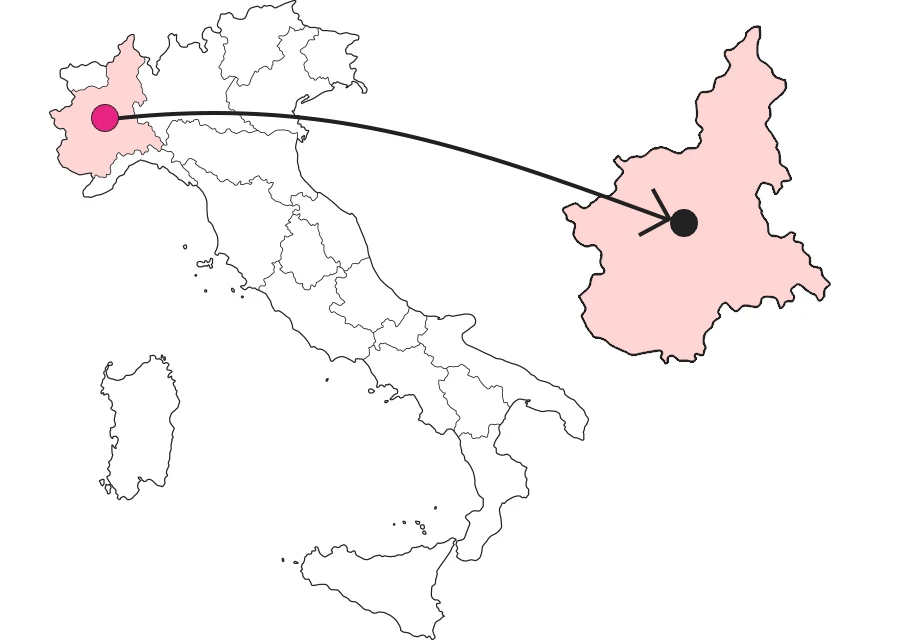SHARRYLAND


The cupped rocks of the Valsusa Valley
Ancient mysteries between history and legend



Where is

What it is and where it is
The paths through the woods come alive, hiding traces and revealing them to an attentive eye, accompanying to the unexpected, and among a thousand rocks here appear those destined and telling stories! Signs, cup marks that Iron Age stonemasons engraved, with that iron just received as a gift from their ingenuity: maps of heaven or earth, and then engravings that identified areas of worship, and again crosses perhaps added in other eras, when the pagan past was feared but not completely forgotten. The legend of Rama rumbles in the imagination, a mythological non-place that belongs not to written history but to collective memory.
Why it is special
Across the Susa Valley, in just a few kilometers we can encounter the cupped rocks of Vaie(pera dle Faje, the Stone of the Fairies); the Maomet site in Borgone, with its edicolette depicting a deity; and the Pera Crevolà (pitted rock) near the hamlet of Menolzio di Mattie, near Susa. Finally, just at the foot of the Arch of Augustus in Susa, a rock bears a series of cupmarks connected by channels, steps carved into the rock, and a votive well. What was the significance of the cupmarks? Hard to say, perhaps celestial maps or of ancient settlements, basins in which to collect blood from sacrifices or lustral waters. In any case evidence of a civilization lost between oblivion and myth, but all the more alive as a trace for our curiosity to follow.
Not to be missed
The Susa Valley is made up of mysteries and traditions, of colors and landscapes, but also of scents and flavors: a variety of fantastic cheeses, and then cured meats such as Mica, a surprising salami without gut but wrapped in a veil of rye flour and spices; those who love sweets can sink into the buttery softness of Focaccia di Susa, or delight in the fragrant canestrelli of Vaie. Stories flow in the wine, in the dark red of Avanà or the golden hues of Baratuciat. And, they say, where there is good water, there is good beer, so in Vaie the brewery produces barley nectar for all tastes... and all stories!
A bit of history
Cup rocks can be ascribed to a period from the Copper Age to the Iron Age, in fact, cupmarks assume the use of metal tools to make them. The Maomet site in Borgone can probably be attributed to the 2nd-3rd centuries AD. The aedicule with the bas-relief depicting a figure accompanied by a dog is votive, although attribution to a specific deity is uncertain. The name dates from a period when any reference to pagan cults recalled the raids of the Moors. As with the cup-marks of Susa, we are dealing with places held sacred from time immemorial, whose sacredness was recognized and assimilated by Roman settlers.
Curiosities
Beginning in the 19th century, discoveries of prehistoric settlements all over the valley gave rise to the legend of Rama, a fabulous city glittering with gold. It was inhabited by giants belonging to a civilization highly advanced in technology and art, and was destroyed by a natural disaster in ancient times. Of course, despite being a legend, many people set out on the trail of Rama to hunt for its treasures.
 The "Maomét," a bas-relief probably depicting the god Silvanus, on the border between Borgone and S. Didero (TO)
The "Maomét," a bas-relief probably depicting the god Silvanus, on the border between Borgone and S. Didero (TO)
Enter the Map of Italy's Undiscovered Wonders and find treasures where you least expect it... Inspire, Recommend, Share...
Contact
Collections
The Map thanks:
Enter the Map of Italy's Undiscovered Wonders and find treasures where you least expect it... Inspire, Recommend, Share...
Where is

Contact
Collections

